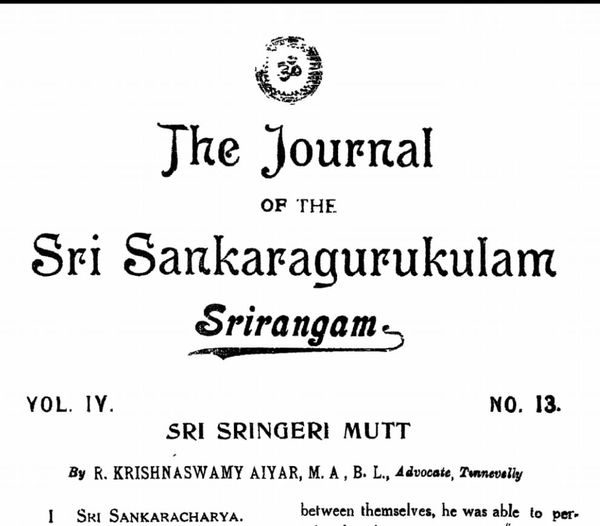This work has 2016 slokas in Nagara character which contain Tantric rituals for the worship of various forms of S’akti.
Gadyavallari was written by Nijátmá – prakás’ánandanátha Mallikárjuna Yogíndra in the18th century. A paper manuscript of this work was ccollected from Bihar State.
A brief reference about this Tantrik work is also found in the Notices of Sanskrit Manuscripts by R. L. Mitra, No. 2261, published by the orders of the Government of Bengal, Vol.VIzi, Calcutta, 1884.
This work opens with a list of the Gurus belonging to the S’añkarácharya Parampara. After naming some of the earliest Preceptors of Advaita such as S’iva, Vishņu, Vas’ishtha, Parásara, &c., the line of succession from S’añkaracharya runs thus:
1, Sankara;
2, Bodhaghana Achárya;
3, Jnánaghana;
4, Jnánottamas’iva;
5, Jnánagiri;
6, Simhagiri;
7, I’s’vara Tírtha;
8, Nrisimha Tirtha;
9, Vidyátirthas’íva;
10, Bharati Tirtha;
11, Vidyáranyaguru;
12, Malayánandadeva Tirtha Saraswatí;
13, Yádavendra Saraswatí;
14, …… sarasvati;
15, Srínrisimha Saraswatí;
16, Mádhavendra Saraswatí;
17, Mallikarjuna Yogindra;
18, Rámadeva;
19, Dáyadeva Yati;
20, Gananánanda;
21, Chidghanánanda;
22, A’nanda-chitpratibimba.
The succession list of Gurus of the Sringeri Matha given in the Guruvamsa Kávya of the Sringeri matha substantially agrees with that given in Gadyavallari written in 1435 Saka.. 1736 C.E. (upto Vidyaranya). It is to be noted that the names of Gurus starting from Malayananda Deva (Sringin or Malayala Brahmendra?) are not found in the recently published list of Gurus of the Matha.
























